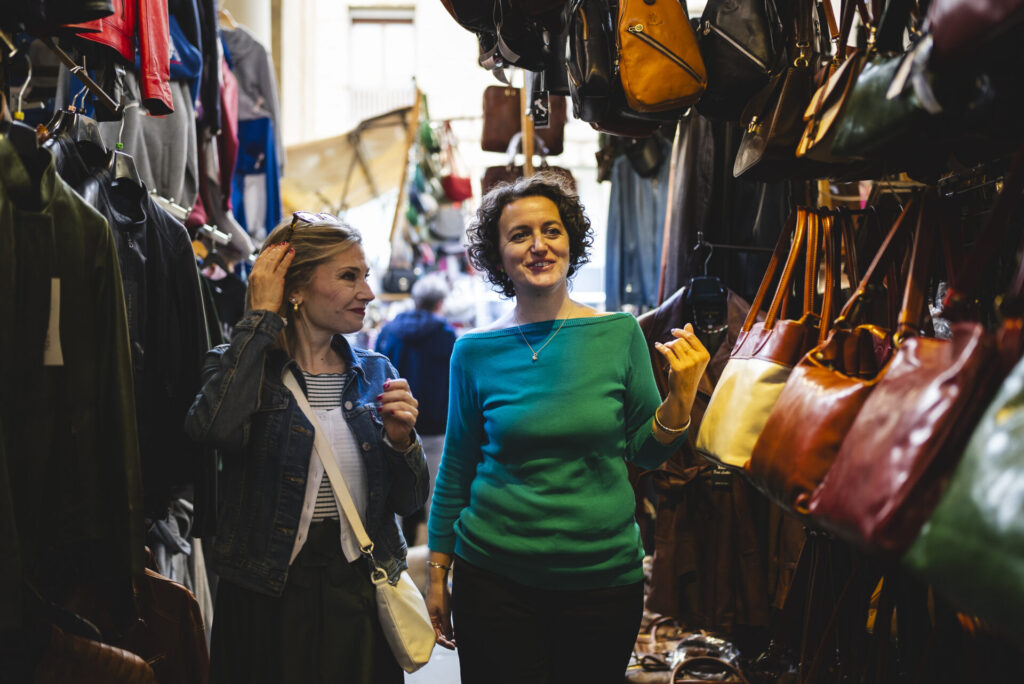Among the many sculptures by Michelangelo that you can find in Florence, there is one very particular and quite unknown: Bacchus, made on marble around 1496-97, displayed in one of our favorite museums, the Bargello. On the ground floor of this imposing medieval building, a large room hosts numerous masterpieces by the famous Michelangelo. Bacchus is the first to greet us as soon as we step through the door. It is no coincidence that it is positioned right at the beginning of the museum itinerary, being an early work of the great sculptor. Looking at this splendid marble, created by Michelangelo when he was just over twenty, one is fascinated by the frank and realistic language with which the author depicted Bacchus.
A Drunk Deity!
The god of exhilaration and symbol of excess, Bacchus has a round, harmonious, and sensual face, framed by clusters of grapes. His half-open mouth and elusive gaze emphasize Bacchus’s abandonment to the pleasures of life. A deity that appears softly resting on his left leg while carelessly lifting a large cup of wine. With his completely naked body and slightly elusive gaze, Bacchus seems to be in an unstable balance on his legs, demonstrating that even deities lose control if they drink too much! Leaning against him, almost supporting him, a small satyr with pointed ears peeks out. Sitting on a trunk, he smiles mischievously, ready to bite into a bunch of grapes. The panther skin that traditionally dresses him has slipped under his goat legs.
Michelangelo’s Anatomical Research
The musculature of both figures, realistically tense on one side and relaxed on the other, the perfect joints of shoulders, elbows, and knees, and the visible ribs due to the torsion demonstrate Michelangelo’s excellent knowledge of human anatomy, achieved through long and solitary anatomical study sessions conducted on cadavers from hospitals. Bacchus’s pose recalls the contrapposto, or chiasmus, of ancient Greek sculptures. The left leg is tense, in the effort to support himself, while the right leg bends and slightly lifts. Correspondingly, the positions of the arms: the left arm extended along the leg, the right arm bent to lift the cup.
Beautiful, Yet Rejected…
In this work, Michelangelo not only draws inspiration from ancient sculptures; he also openly imitates them, according to the request of the patron, Cardinal Raffaele Riario, an expert art collector. The story goes that a few years earlier, the cardinal was deceived into purchasing a Sleeping Cupid as an ancient work, actually sculpted by the young Michelangelo. Upon discovering the deception, the cardinal wanted to meet the artist who had managed to imitate ancient art so well. Enthusiastic about the young Florentine’s skill, Riario commissioned a new work: Bacchus. Although the marble of the Bargello is one of the few perfectly finished works by the artist, the cardinal was not satisfied with the result, to the point of immediately reselling Bacchus once it was completed. After various changes of ownership, the sculpture was purchased by the Medici and brought from Rome to Florence to become part of the grand ducal collections.
So, is this work by Michelangelo successful or not? We leave the judgment to you, when you see it in person by visiting the Bargello Museum in our tour dedicated to the great Michelangelo!



